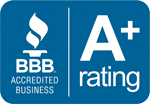Medicare’s Annual Enrollment Period begins Oct. 15. and runs through Dec. 7. This is the time to reassess your Medicare plans.
If you are a current Medicare recipient, in September you will receive your Annual Notice of Change from your Advantage plan or pharmaceutical plan company. This notice will highlight all of your plan’s changes for 2021.
The open enrollment period allows you to make a number of changes if you’re already enrolled.
The major changes you can make include:
- Switching from Original Medicare to a Medicare Advantage plan, or vice versa.
- Changing your Medicare Advantage plan.
- Joining a Medicare prescription drug plan or picking a new drug plan.
- Dropping your drug coverage.
What’s New
Insulin coverage
The big news is the introduction of enhanced Advantage and drug plans, capping insulin costs at $35 through the coverage gap, or “donut hole.” Studies have estimated these plans will save insulin users an average of more than $700 a year.
If you are on insulin, check your plan carefully as not all plans will offer this reduction. It is only available from the insurers that are participating in a five-year trial period for the program. Lower-cost drug plans will likely not offer these savings.
Drug plan deductibles
The drug plan deductible limit will be $445. To reach the coverage gap/donut hole, you’ll need to spend more: $4,130 (up $110 from this year). Drug costs in the gap will remain at 25% of the retail cost. The out-of-pocket threshold to get out of the gap will be $6,550 in 2021.
There are not any major changes in Advantage plan benefits for next year. However, experts expect increases in hospital copays, either in the daily amount or the number of days a copay is required.
The Centers for Medicare & Medicaid Services has allowed Advantage PPO plans to increase their combined in-network/out-of-network maximum out-of-pocket limit to $11,300, and their HMO limit to $7,550.
That’s not to say that all plans will have these maximums, but experts do expect that many plans will raise their out-of-pocket maximums for next year.
Part B premiums
The Part B premium is expected to rise 2.7% to $148.50 per month. For higher income earners, the income limits will increase to $2,000 for each category. That said, it’s likely there will not be a Social Security Cost of Living Adjustment for 2021, which means they cannot raise Part B premiums.
COVID-19
Since the novel coronavirus continues to spread and no vaccine has yet become available, obviously coverage for COVID-19-related services is on the minds of many seniors, particularly if they have to pay out of pocket for them.
Testing for COVID-19 ordered after Feb. 4, 2020 is covered under traditional Part B when ordered by a physician or other health care provider. Beneficiaries are not required to pay the Part B deductible or any related co-insurance.
Medicare Advantage plans may not charge for COVID-19 tests and testing-related services. Additionally, Part B is required to fully cover a COVID-19 vaccine if one becomes available.
Also, telemedicine services are now available to beneficiaries in any geographic area and will be reimbursed by Medicare. CMS has also waived the requirement that a provider of telemedicine must have treated the beneficiary in the past three years.
As for treatment, if a Medicare patient is required to be quarantined in the hospital even if they no longer require acute care, they will not be required to pay an additional deductible for the cost of the quarantine.
Medicare Advantage plans may waive or reduce cost-sharing for COVID-19-related treatments, but this is not required. These plans may also waive prior authorization requirements for COVID-19 services.




